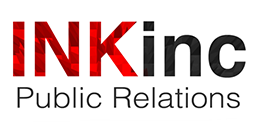One would think yellow journalism would be long gone by now. First of all, doesn’t yellow journalism only appear in print newspapers? And isn’t it true that supposedly no one reads newspapers anymore? Finally, since we have all these “new” rules on libel and defamation to keep faulty journalism at bay couldn’t one assume that they have been largely doing their job? Unfortunately, it does not seem to be that way.
Although print newspaper readership has been steadily declining throughout the years, according to the Pew Research Center about half of all adults read a newspaper at least once a week. The age of the print newspaper audience may be older, but in any case, whether one reads print newspapers does not change the fact that yellow journalism has seeped into digital outlets as well. It is in this digital world where stopping libel and defamation has also met a match.
The internet offers a degree of anonymity which has encouraged the spread of information that would otherwise be censored. It just so happens that quite a bit of that information also tends to be untrue. Without getting into constitutional issues on free speech and the lawsuits on media news outlets (think Gawker), we should look at the emergence of the modern yellow journalism: clickbait.
Yellow journalism arose from a need by newspapers to beat out their competitors. They needed a way to convince readers to buy their newspapers as opposed to the others. To get more people to buy their own, they embellished their article’s titles and placed exaggerated images on their front pages to attract attention. Most of the readers knew that the stories were a stretch of the truth, but for the most part, no one complained. After some time, legislation was put in place to fact check most of what newspapers published to the extent that the hyperbole in the yellow journalism of the 1890s to 1910s never repeated itself.
Nowadays, digital news sites receive revenue through advertisements and the number of impressions. Since they get paid more by getting more people to click on their stories and see the advertisements, the need to have an attractive headline and photo has rebirthed the tendency to exaggerate. Enter clickbait.
The problem with enacting legislation as before is the already mentioned anonymity of the internet. The issue is more prevalent on social media sites, but in regards to the more regular online sites, media distributors like Yahoo have already received limitations on the types of stories and the sources they can publish or share on their websites. Whether more will be done with this issue is to be seen, but at the moment it is at least worth pointing out that much of what is going on now has been done before.
